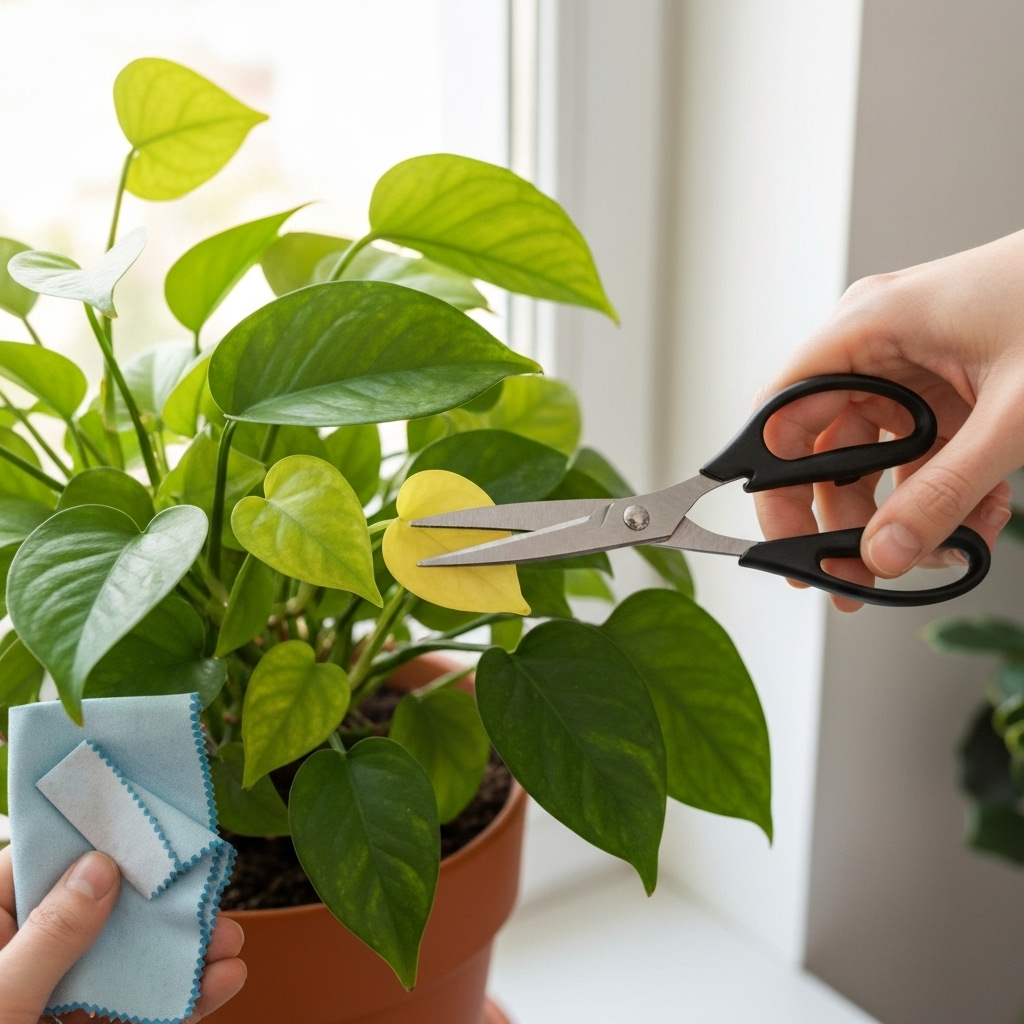Pruning is an important part of plant care. It keeps plants looking tidy, encourages new growth, and prevents disease. But many beginners hesitate to prune, fearing they’ll hurt their plants. With the right techniques, pruning is safe and highly beneficial.
Why Pruning Matters
- Removes dead or yellowing leaves.
- Encourages fuller, bushier growth.
- Prevents overcrowding of stems and leaves.
- Improves air circulation to reduce pests and fungus.
Tools You’ll Need
- Clean, sharp scissors or pruning shears.
- A small cloth with rubbing alcohol for sterilizing tools.
- Gloves for plants with sap or spines.
When to Prune
- Spring and summer: Best seasons for pruning, as plants grow actively.
- Avoid winter: Plants are usually resting.
- As needed: Remove dead or diseased parts anytime.
How to Prune Step by Step
- Identify what to remove: Look for yellow, brown, or damaged leaves.
- Cut close to the stem: Snip dead leaves at the base without harming healthy tissue.
- Thin overcrowded stems: Cut back weaker stems to give space for stronger ones.
- Pinch for bushiness: For plants like basil or pothos, pinch the tips to encourage branching.
- Remove old flowers: Cut spent blooms to redirect energy into new growth.
Aftercare Tips
- Water lightly after pruning to help recovery.
- Keep the plant in indirect light for a few days.
- Fertilize after 2–3 weeks to boost new growth.
Common Mistakes to Avoid
- Over-pruning: Removing too much weakens plants.
- Dirty tools: Can spread disease.
- Cutting in the wrong season: Slows growth and stresses plants.
Final Thoughts: Healthy Growth Through Pruning
Pruning is not about harming your plants but guiding their growth. By removing dead leaves and encouraging new branches, you help them become healthier and more beautiful. With practice, pruning will feel natural and rewarding.

